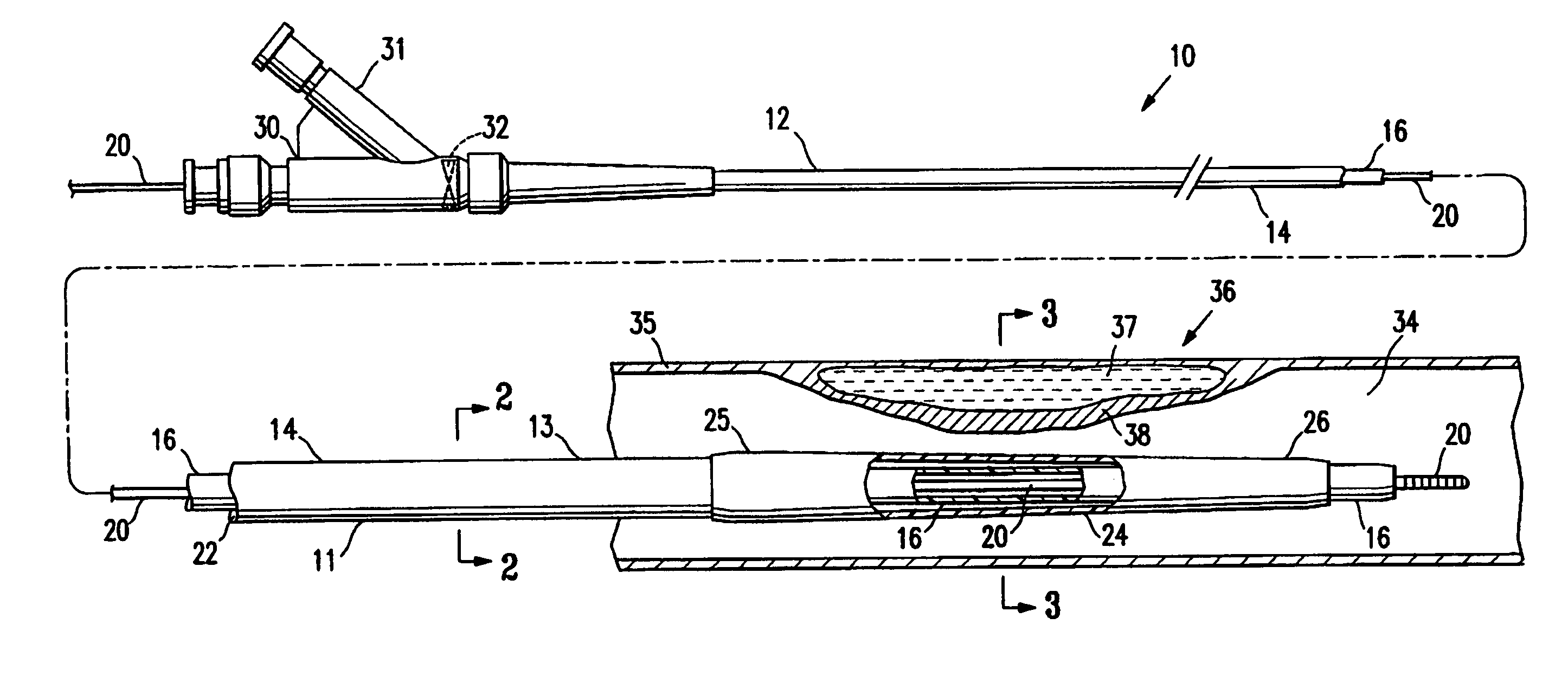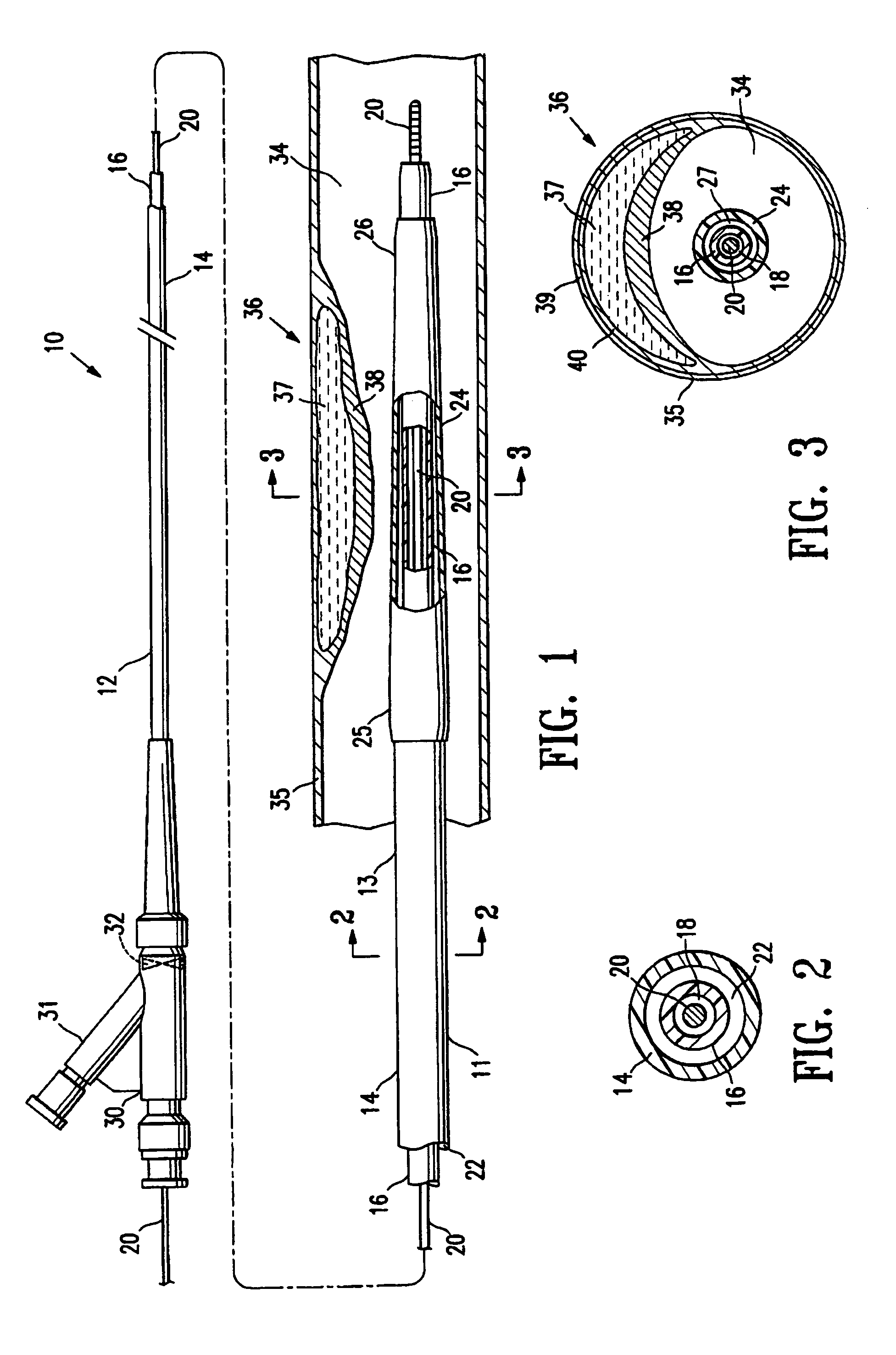Method of treating vulnerable plaque
a vulnerable plaque and plaque technology, applied in the field of atherosclerotic plaque treatment, can solve the problems of fibrous cap producing some disruption, and achieve the effects of reducing or avoiding damage to the surrounding wall, strengthening the vulnerable plaque, and increasing the synthesis of extracellular matrix protein (ecm)
- Summary
- Abstract
- Description
- Claims
- Application Information
AI Technical Summary
Benefits of technology
Problems solved by technology
Method used
Image
Examples
Embodiment Construction
[0022]FIG. 1 illustrates an over-the-wire type balloon catheter 10, such as an angioplasty catheter, useful in a method of treating vulnerable plaque which embodies features of the invention. Catheter 10 generally comprises an elongated catheter shaft 12 having an outer tubular member 14 and an inner tubular member 16. Inner tubular member 16 defines a guidewire lumen 18 (FIG. 2) configured to slidingly receive a guidewire 20. The coaxial relationship between outer tubular member 14 and inner tubular member 16 defines annular inflation lumen 22. An inflatable balloon 24 disposed on a distal section of catheter shaft 12 has a proximal skirt section 25 sealingly secured to the distal end of outer tubular member 14 and a distal skirt section 26 sealingly secured to the distal end of inner tubular member 16, so that its interior 27 is in fluid communication with inflation lumen 22. An adapter 30 at the proximal end of catheter shaft 12 is configured to provide access to guidewire lumen ...
PUM
 Login to View More
Login to View More Abstract
Description
Claims
Application Information
 Login to View More
Login to View More - R&D
- Intellectual Property
- Life Sciences
- Materials
- Tech Scout
- Unparalleled Data Quality
- Higher Quality Content
- 60% Fewer Hallucinations
Browse by: Latest US Patents, China's latest patents, Technical Efficacy Thesaurus, Application Domain, Technology Topic, Popular Technical Reports.
© 2025 PatSnap. All rights reserved.Legal|Privacy policy|Modern Slavery Act Transparency Statement|Sitemap|About US| Contact US: help@patsnap.com



